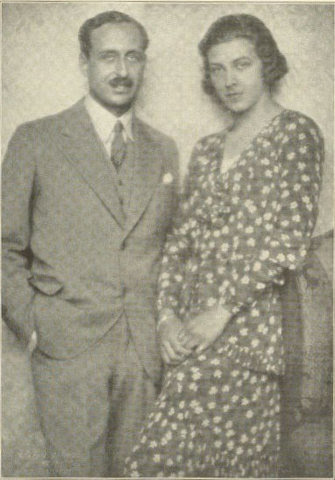Archaeologist and Author Prince Erkinger von Schwarzenberg, a man of many passions and talents, left an indelible mark on the world of history and art. Born in 1933, Prince Erkinger was a true Renaissance man, fluent in six languages and with a keen interest in archeology and the history of art. His love for these subjects was evident in his work, which spanned both academic and creative pursuits. In 1966, he published his book *Die Grazien*, a testament to his dedication to his craft[1].
From the Alessandro Morente to the Alexandre Richelieu, Prince Erkinger's contributions to the field of art history were significant. His article, published in the Journal of the Warburg and Courtauld Institutes, showcased his expertise in the portraiture of Alexander the Great in 17th-century Italy and France. This work, like his book, demonstrated his ability to bridge the gap between academia and the general public, making complex historical topics accessible to a broader audience[1].
what were some of Prince Erkinger von Schwarzenberg's most significant contributions to archaeology

what specific archaeological sites or discoveries is Prince Erkinger von Schwarzenberg known for

what were the key findings from Prince Erkinger von Schwarzenberg's archaeological excavations
Prince Erkinger von Schwarzenberg died on 29 April at San Casciano, near Florence. The prince had turned eighty-nine years-old earlier that month.
 |
| The prince's father Johann and mother Kathleen. |
Born on 8 April 1933 at Vienna, Prince Karl Erkinger Thaddäus von Schwarzenberg was the first child and only son of Prince Johann von Schwarzenberg (1903-1978) and Vicomtesse Kathleen de Spoelberch (1905-1978), who wed in 1931. Erkinger was joined by a younger sister, Princess Colienne (b.1937; married Count Maximilian Joseph von Meran). Erkinger's parents, Prince Johann and Princess Kathleen, were both killed in a motor vehicle accident on 26 May 1978 at Cittá della Pieve.
In 1946, Prince Johann and Princess Kathleen purchased a fifteenth-century villa in the countryside of San Casciano. Their son Erkinger was entranced by the villa and returned to live there permanently in 1978.
Erkinger Schwarzenberg attended Oxford and Princeton. His father was the Austrian ambassador to the United Kingdom. In 1957, while a student at Oxford, Erkinger became unofficially engaged to Alice Jolliffee, the daughter of the 4th Baron Hylton - the romance did not end in marriage. On 26 July 1962 at Athens, Prince Erkinger von Schwarzenberg married Elisabeth Constantinides (b.1943). Erkinger and Elisabeth had three children: Prince Johannes (b.1963), Princess Anna Gabriella (b.1964; married 1st Baron Philipp von Waechter; married 2nd Adam Dixon), and Prince Alexander Konstantin (b.1971; married 1st Annabel Dimitriadi; married 2nd Donna Elena Bonanno dei Principi di Linguaglossa). Erkinger and Elisabeth divorced in 1975. On 13 July 1977 at San Casciano, Prince Erkinger von Schwarzenberg married Countess Claudia zu Brandis (b.1949). Erkinger and Claudia had two daughters: Princess Gaia (b.1978; married Loïc van Cutsem), and Princess Ida (b.1980; married Baudouin de Troostembergh).
Fluent in six languages, the prince was keenly interested in archeology and the history of art. He was also a passionate farmer. In 1966, Erkinger's book Die Grazien was published. In 1969, the prince contributed an article entitled "From the Alessandro Morente to the Alexandre Richelieu. The Portraiture of Alexander the Great in Seventeenth-Century Italy and France." which was published in the Journal of the Warburg and Courtauld Institutes.
Erkinger Schwarzenberg is survived by his wife, his five children, and his twenty grandchildren.
May the Prince Rest in Peace.
Source: San Casciano, addio a Karl Erkinger Schwarzenberg: a 89 anni muore il “principe contadino”
As we conclude our exploration of the life and work of Prince Erkinger von Schwarzenberg, we are reminded of the profound impact he had on the world of archaeology and art history. His passion for these subjects was evident in his book *Die Grazien* and his article "From the Alessandro Morente to the Alexandre Richelieu. The Portraiture of Alexander the Great in Seventeenth-Century Italy and France," which was published in the Journal of the Warburg and Courtauld Institutes. This work demonstrated his ability to bridge the gap between academia and the general public, making complex historical topics accessible to a broader audience. Prince Erkinger's legacy serves as a testament to the power of dedication and expertise in shaping our understanding of the past.
Archaeologist and Author Prince Erkinger von Schwarzenberg left behind a rich legacy that continues to inspire and educate us. His contributions to the fields of archaeology and art history are a lasting reminder of the importance of preserving and sharing our cultural heritage. As we move forward, it is essential that we continue to build upon his work, ensuring that future generations have access to the same wealth of knowledge and understanding that he provided. By doing so, we can honor his memory and keep his spirit alive. May his work continue to inspire and educate us, and may his legacy serve as a beacon for future generations of scholars and enthusiasts alike.




No comments:
Post a Comment